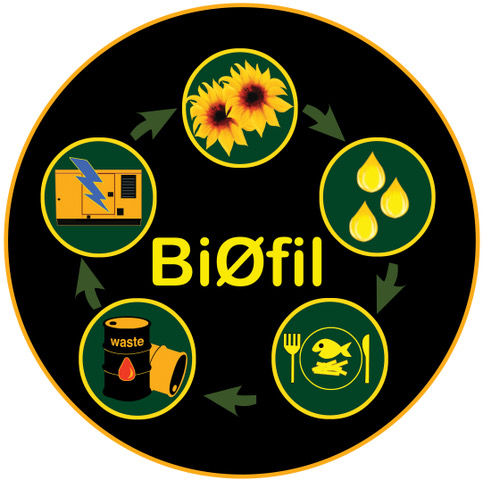
How does it work?
The generator has been converted to be fuelled by used deep-fryer vegetable oil, which powers the fast-charger and the EV once it’s plugged in. When an EV arrives at Caiguna, one of the roadhouse staff will start the BiØfil generator, ready for charging. The roadhouse staff will be trained in how to filter the waste chip oil, how to fill the generator, and how to operate and maintain the BiØfil EV charger.
Isn’t using a generator and oil going to create emissions?
The emissions created by BiØfil are equal to the carbon, the CO2, which is absorbed by the plants that were grown to create the vegetable oil in the first instance. The process represents the true definition of “net zero” with no incremental carbon impact on the environment.
Why isn’t solar power being used instead?
The cost of installing an equivalent solar powered EV fast charger with a suitably sized storage battery and power inverter is in the order of $500,000, while the cost to build a BiØfil fast charging unit is about $75,000. Having solar-powered fast-charging units available everywhere is the ideal solution, but it’s not economically feasible for low traffic locations, making BiØfil is an environmentally friendly interim solution for the next few years, until there are more EVs on the road and more EVs driving across the Nullarbor.
How many BiØfil fast charging units are there, and where will they be?
There is an existing unit that has been operating at the Ampol in Jurien Bay for the past 12 months. The current forward plan is to place a second BiØfil unit at Caiguna, and a third unit is being considered for Ravensthorpe in the South West. A fourth unit remains mobile and will be used for EV car club road trips and to service TOCEVA Racing as needed.
How long does it take to fully charge an EV using BiØfil?
It depends on the size and state of charge of the EV battery, but on average, it would take around an hour to charge using BiØfil, enough time to have a break from driving and a meal.
BiØfil charges EVs at nominally 50 kilowatts (kW) which equates to adding around 320 kilometres of range to the average EV.
Does BiØfil suit every electric vehicle or is an adapter required?
BiØfil has the European standard CCS2 plug. Most new EVs imported into Australia will be fitted with a CCS2 plug, some older EVs may need an adapter.
Where will the BiØfil charging unit be located?
At the Caiguna Roadhouse in Western Australia, right in the middle of the WA Nullarbor. The plan for the Western Australian Government’s electric highway has a gap of 720 kilometres between Norseman in WA and the South Australian border, which is too far for almost all EVs to travel. With a BiØfil unit at Caiguna Roadhouse, it means that EVs can now drive across the Nullarbor with speed and ease.
If a community wants a BiØfil unit in their town, how can they get one?
BiØfil is a not-for-profit venture. BiØfil isn’t a commercial enterprise, and it wasn’t designed to become a business. It was developed to help fast charge the TOCEVA Racing rally car, and then we decided to place a unit at Caiguna Roadhouse to connect Western Australia with the rest of Australia for the benefit of the EV driving community. If other remote locations have the need for a BiØfil unit, Jon Edwards is happy to provide some advice.